Vyhledávání
WHY
Powder quality in 3D printing significantly impacts the printing quality, and the overall success of a printing task. By analysing it we can avoid problems in the printing process and, at the same time, get valuable information when looking for alternative powders.
HOW
For the complex assessment of qualitative parameters such as chemical composition, size, shape and particle distribution in a given volume, we use analytical methods, primarily chemical analyses and electron microscopy.
WHAT
The analyses give us not only the details about the quality of a printing powder, but also a lot of valuable and interesting information. Based on them, we can evaluate the condition of the powder, its degradation or compare individual powders between each other.
Example: Analysis of the chemical composition, shape, size and the distribution of particles of a 3D printing powder
The key moment to successfully analyse a 3D printing powder is to choose a suitable technology and an analytical method with regard to the expected properties of a 3D printing powder.
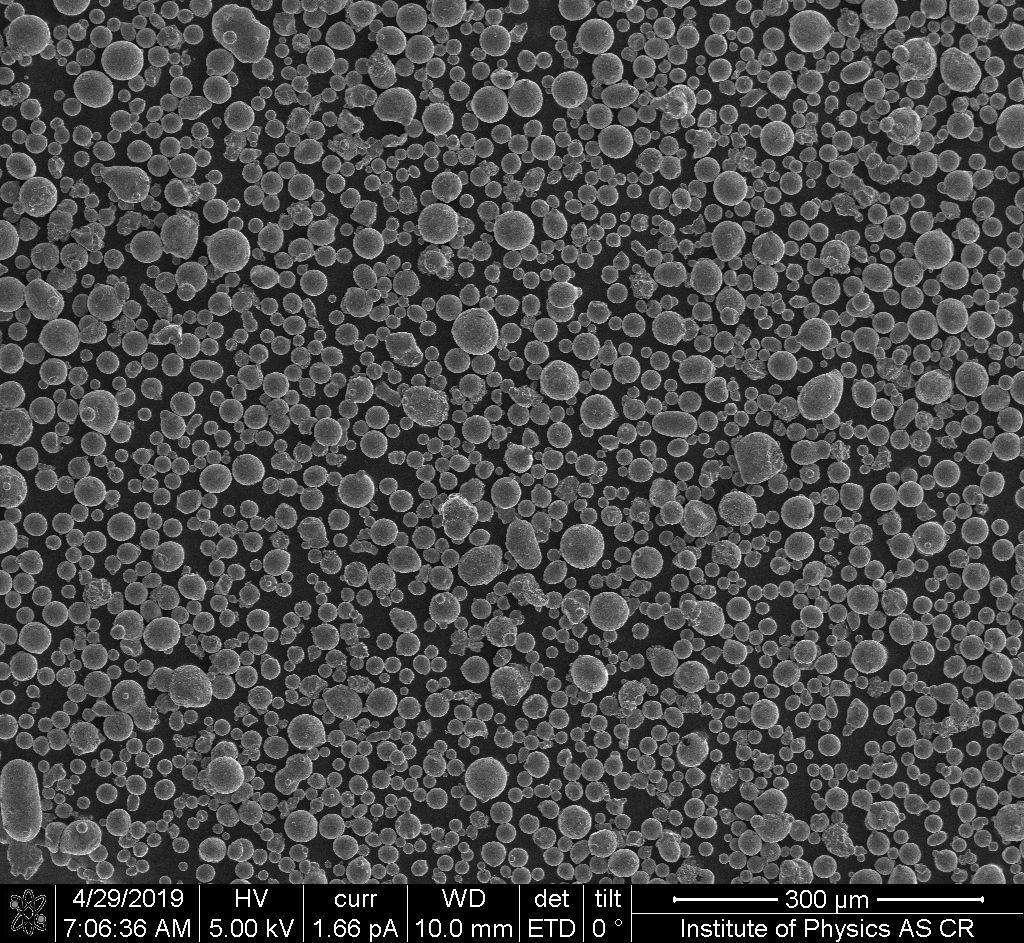
An option that comes to mind when looking to analyse the shape and size of particles is using the scanning electron microscope, which can provide sufficient magnification. The powder should ideally consist of only perfectly round particles. An important role, however, is also played by particle size, especially the particle-size distribution.
According to available literature, the particle-size distribution should correspond to an interval of approximately 15-45 µm. Larger particles (depending on the required height of the layer) might be carried away into the spillway tank. Smaller particles, in turn, might aggregate and prevent the application of a uniform layer.
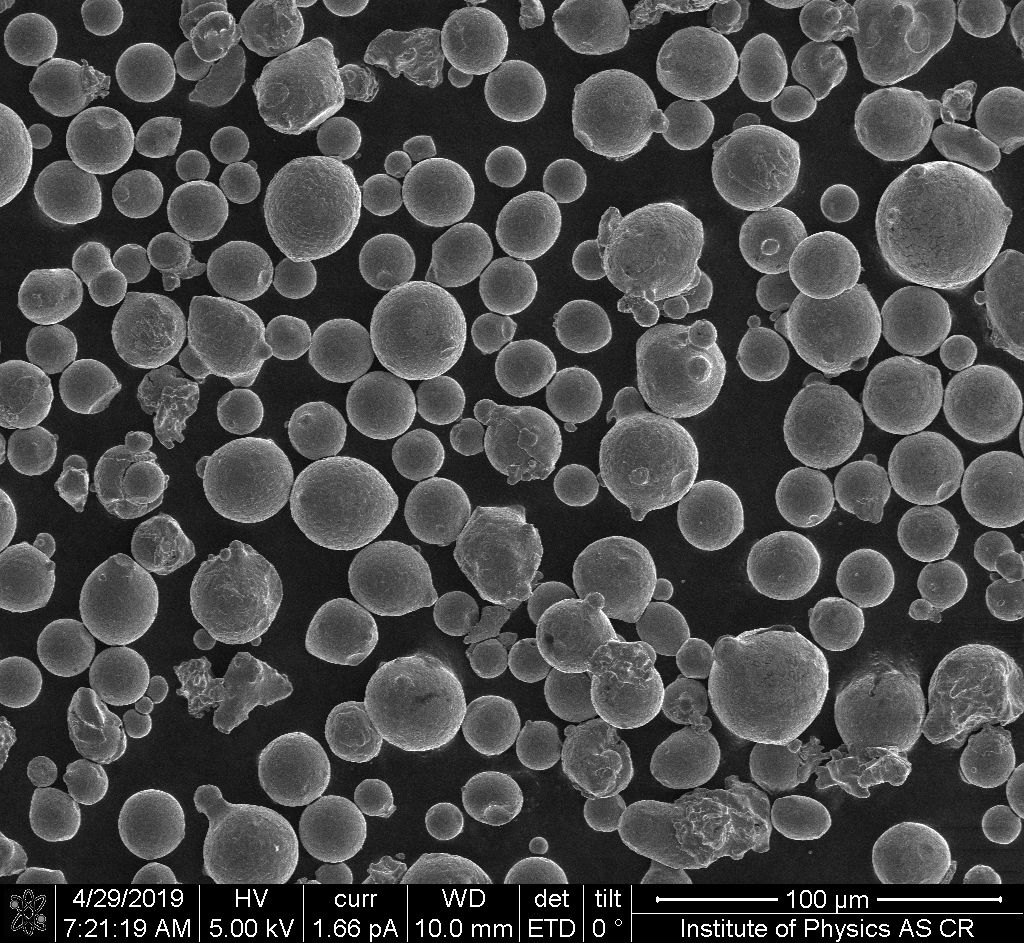
The chemical composition of a powder is both indicated by the manufacturer and laid down by regulations for a specific material. These norms identify the content intervals of individual elements of a material. However, the values might vary, in principle, from regulation to regulation.
Considering the method of measuring chemical composition and the accuracy of the method, we get an idea whether or not a material complies with a regulation. The selection of the analytical method is based not only on the experimental equipment available for the measurement, but also on whether the method is suitable for measuring chemical composition of powders or on the complexity of and the effort required for the preparation of samples for the measurement.
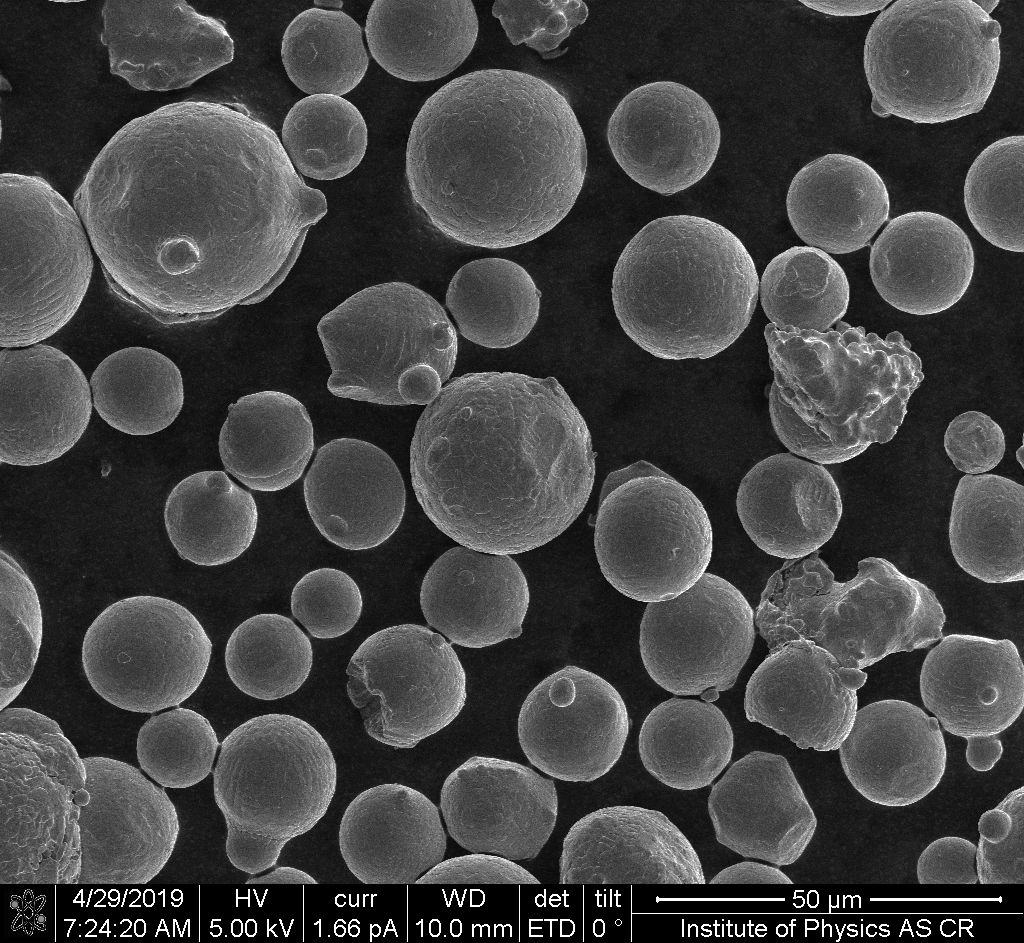
A complex powder analysis provides us with a lot of valuable information. The measured values can be used for example as input information for an interim powder quality check, allowing us to achieve the same quality standard as that of the final product. A quality check may also be reasonable for a newly delivered powder, whether directly from the manufacturer of the printing machine or from another source.
The measured values are also a point of departure when choosing another supplier, as they serve as a reference material for an alternative option from other producers, which are often much cheaper. As printing time and materials are the most expensive items on the 3D printing bill, choosing a cheaper alternative can make the final product significantly cheaper.
Last but not least, we should bear in mind that the printing powder is re-used in the printing machine, which is why it is reasonable to check, at regular intervals, on its degradation and re-usability.
Do you have any questions?
The range of analytical methods available in the NCC for MATCA is too extensive to be fully outlined here. If you have any questions concerning a specific application, don’t hesitate to contact us.
Related technologies
Scanning electron microscope (SEM)
The scanning electron microscope (SEM) is, like any other microscope, an optical instrument which unlike traditional microscopes uses electrons instead of photons as a source of radiation and electromagnetic lenses instead of glass lenses. The entire internal space, the electron beam, and the sample are located in vacuum to prevent electrons from interacting with the atmosphere. To study or analyse a sample’s surface, we use the electron beam-sample interactions to obtain a number of data on e.g. the sample’s microstructure, crystallographic ordering or chemical composition etc. More >>
Available in the NCC for MATCA:
SEM – FEI Quanta 3D FEG, SEM – FEI Phenom, SEM – Tescan MAIA-3,
SEM – FEI/Philips 30XL
Energy-dispersive X-ray spectroscopy (EDS)
Energy-dispersive X-ray spectrometry (EDS) is an analytical method based on the detection of characteristic X-rays emitted during interactions between an electron beam and the surface of the sample. From energies of the photons emitted in these interactions, we obtain the EDS spectrum, enabling us to determine individual constituent elements of the sample, as well as their quantities. The EDS detectors are usually a part of SEM or TEM. More >>
Available in the NCC for MATCA:
EDS – SEM – FEI Quanta 3D FEG, EDS – S/TEM – FEI Tecnai F20 X-twin
Related services
Custom 3D printing
Are conventional manufacturing processes holding you back from achieving shorter delivery times or complex geometries? Whether it is plastics, metals or composites, 3D printing is here for you.

Measurements and testing
The ability to analyse parts, samples or any input material is a key prerequisite not only for efficient research work, but also for a reliable production process and the identification of causes if any problems occur.


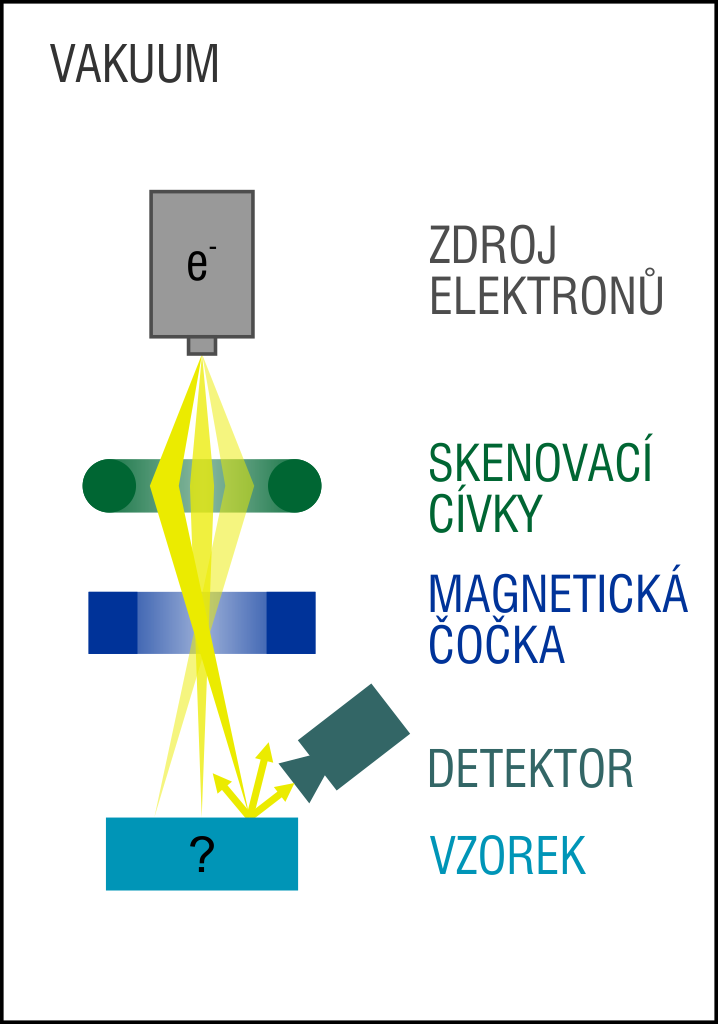
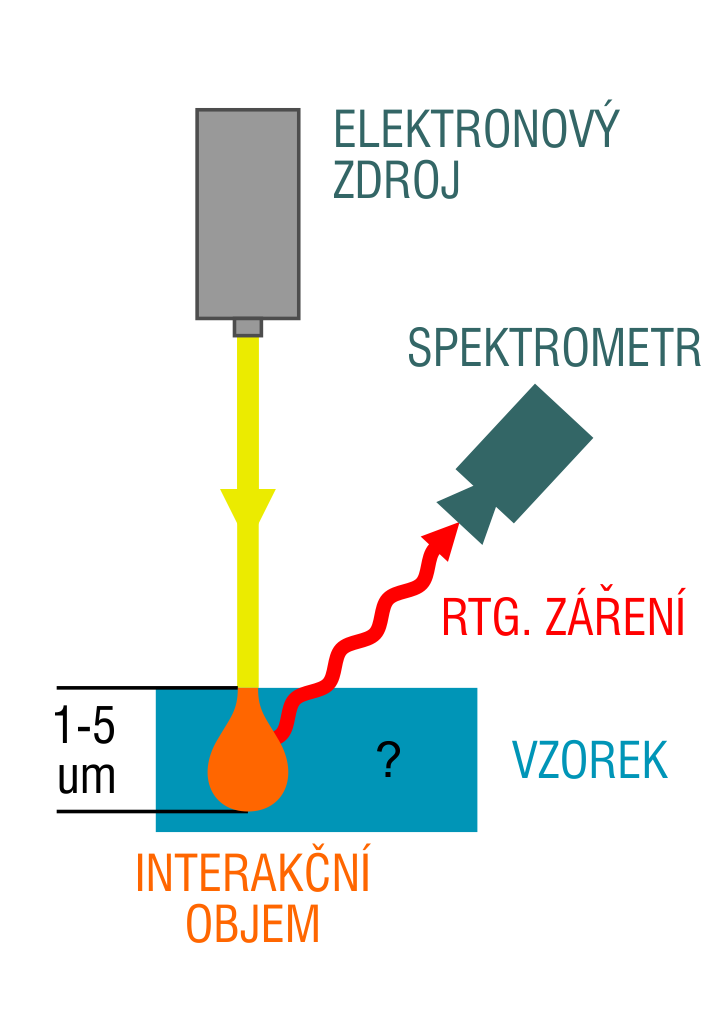
 The NCK for MATCA is supported by the
The NCK for MATCA is supported by the